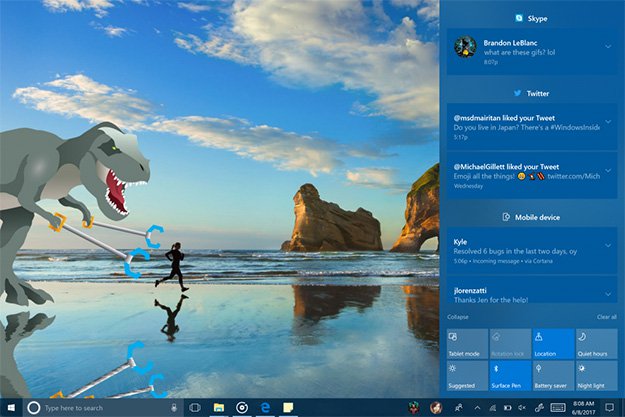Microsoft To Streamline Windows 10 Upgrades Reducing Productivity Sapping Downtime
However, Microsoft's Jason Howard took to the Windows 10 Feedback Hub to detail new changes that are being made to Windows 10 Insider Preview builds (for the Fall Creators Update). Microsoft wants to ensure that users are able to spend more time being productive and less time waiting for their machines to become available to use following an update.

But before we get to what Microsoft has changed, we must first describe the Windows 10 Update process. There’s an “online” phase, in which your PC automatically checks for new updates and actively downloads required system files. The second “offline” phase is where the bulk of the heavy lifting occurs during the update process, and what contributes to the period of time where you’re left cursing at your monitor as precious minutes of your workday are wasted.
Here is the old way of processing Windows 10 Updates:
Online phase:
- PC checks for upgrades (manually or automatically)
- Upgrade payload downloads
- PC waits for the required reboot to begin install
Offline phase:
- PC reboots to begin install process (manually or automatically)
- User content (apps/settings/configurations) is backed up
- New OS files are laid down (Windows Image [WIM] process)
- Drivers and other required OS files are migrated
- User content is restored
- PC reboots and the update finalizes
And here is the new and improved way of doing things according to Howard:
Online phase:
- PC checks for updates (manually or automatically)
- Update downloads
- User content (apps/settings/configurations) is backed up
- New OS files are laid down (WIM process)
- PC waits for the required reboot to begin install
Offline phase:
- PC reboots to begin install process (manually or automatically)
- Drivers and other required OS files are migrated
- User content is restored
- PC reboots and the update finalizes
As you can see, some of the operations that took place during the offline phase have been shifted earlier in the process to the online phase. That means that these operations are taking place in the background while you’re still able to work within Windows. This in turn reduces the amount of time that a Windows 10 upgrade spends in “offline” mode, allowing you to get back to work sooner.
“By moving the old offline portions of the upgrade process to the online phase, upgrades will appear to take longer if you’re watching or timing the progress,” writes Howard. “We didn’t want to sacrifice usability for offline time so the upgrade processes are run at a lower priority to provide for best performance.”
Microsoft is always looks for ways to improve the user experience in Windows 10, and this is just another example of that commitment.

